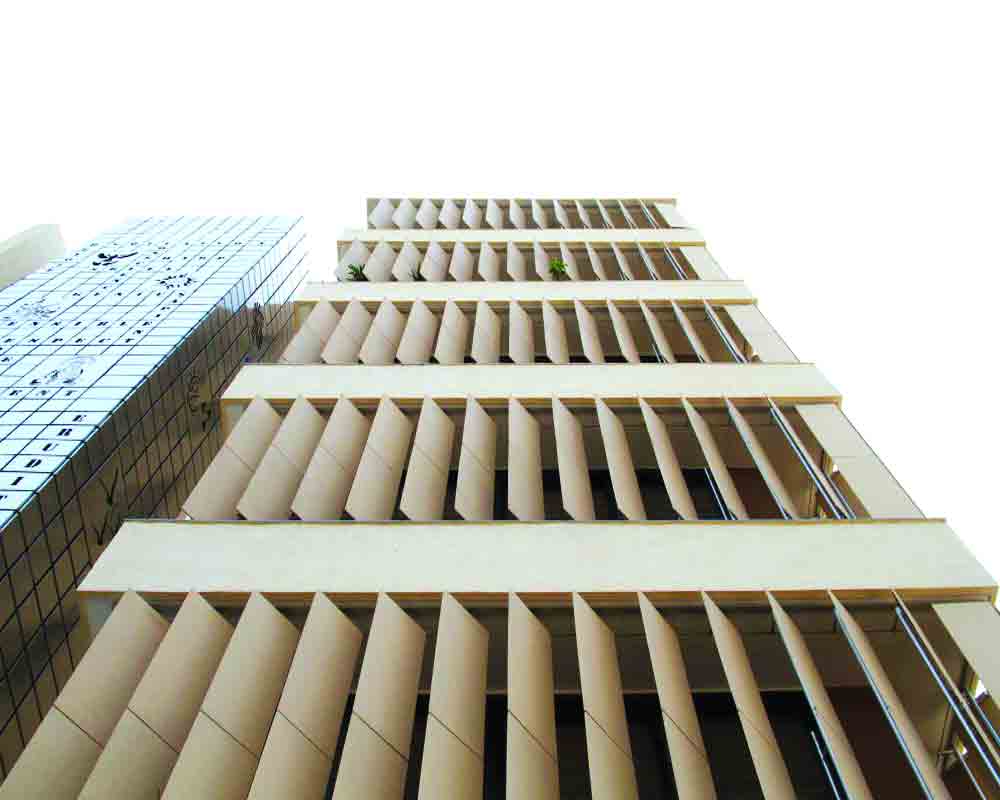Technological advancements have made it feasible for all structures, including homes, to engage in sustainable practises, believes Nitin Mehta
Today, the concept of sustainability has surfaced to become a guiding paradigm in the evolution of the built environment to meet the needs of humans without denying future generations the ability to meet their own needs. The choice of fenestration systems impacts building energy use through thermal heat transfer, solar heat gain, visible transmittance and air leakage, forming an important aspect of sustainable design. Fenestration is an essential element of façade design, which serves both performance and aesthetic purposes. Improvements to fenestration systems such as thermally broken frames, insulating glass units, triple-pane glass, electrochromic and thermochromic glass, and double-glazed wall systems, contribute to the energy efficiency of the facade.
A high-performance sustainable facade is an exterior enclosure or building envelope that uses the least amount of energy to maintain a comfortable environment inside the building whilst promoting the health and productivity of its occupants. It is crucial to consider the design of the building facade when designing an energy-efficient building. With the rapid development in real estate and infrastructure, most commercial and residential buildings are growing vertically. Vertical development creates heat islands, which environmentally unfriendly products further inflame. Parallel to this development, one must also consider how these glass facades can be made sustainable and eco-friendly with lower dependence on fossil fuels.
Technological advancements have made it feasible to manipulate the proportion of transmittance, reflectance, and heat absorption of different wavelengths. Much of the recent innovation in glass for fenestration products has been focused on controlling solar radiation to improve energy performance. The use of low e-coatings, thin films and triple-pane glass helps to reduce the amount of solar radiation transmitted inside the room. This significantly lowers the load on mechanical forms of cooling. Creative use of these glazing options combined with inventive planning of interior spaces can help integrate natural light and further limit the use of lighting devices. Besides reducing energy consumption, other advantages to installing energy-efficient doors and windows include greater durability, minimal condensation, increased indoor comfort and air quality, and reduced operating costs. In the initial days of planning, it is essential to do a brief study of the location's climate to understand how the orientation and positioning of the facade will affect the interiors of the house. The orientation is often an advantage for the user by optimising light and ventilation into the house, thus reducing energy consumption and costs.
For an efficient and sustainable façade, it is advisable to adopt a climate-specific design strategy. In cold climates, where space-heating costs run high, one must opt for products with a low U-factor to keep heat loss to a minimum. Fenestrations with high SHGCs (Solar Heat Gain Coefficient) are preferred in cold climates to utilise solar heat. In warm temperatures, products with low SHGCs offer great potential for reducing solar ingress. Windows with low e-coatings and spectrally selective coatings are effective at lowering the heat gain and have shown a significant reduction in energy consumption and energy costs required for cooling the building.
Sustainable fenestration solutions at homes can easily be incorporated using double glazed windows to insulate the interior spaces effectively making it cooler in the summers and warmer in the winters. Such smart windows are adequately insulated, thereby reducing the overall household energy consumption. The addition of skylights is another energy-saving way that creates an influx of natural light and adds to the overall aesthetics of the space. It is essential to note that high-performance windows with new technologies such as double glazing, special coatings, air-tight construction, nonconductive framing materials and higher quality can account for a huge difference in creating sustainable homes. Such sustainable fenestration solutions are effective tools to enable energy efficiency, significantly enhancing the level of comfort and liveability.
Today, fenestrations are continuously being developed into the ‘fenestrations of tomorrow’. Offering a steady increase of daylight and solar energy utilisation and control, fenestrations are fast becoming a necessary ‘climate screen’ for effectively conserving the energy of a building.
(The author is the co-founder and executive director of one of India’s leading suppliers of eco-friendly high–performance fenestration solutions.)





















